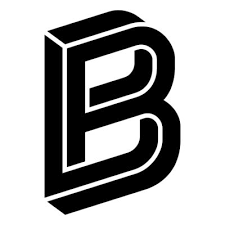Latest Crypto News
Trending now

Bitcoin Survives the $100,000 Crash Test — What’s Next for the Market?
- Bitcoin briefly fell below $100,000 but quickly rebounded as whales accumulated ~29,600 BTC ($3 billion).
- Analysts link the dip to a temporary liquidity drain from US fiscal tightening, not a cycle top.
- Liquidity expansion and renewed fiscal spending could ignite Bitcoin’s next rally in early 2026.

Caffeine AI Lisbon: A Full-Day Event Exploring the Self-Writing Internet and the Future of AI-Built Applications
Caffeine AI, in collaboration with Internet Computer, ICP Hubs Network, and ICP Hub Portugal, announces Caffeine AI Lisbon, set to take place on November 9, 2025. This one-day experience invites builders, creators, and AI enthusiasts to explore the Self-Writing Internet, where applications are built through natural conversation instead of code. Powered by Caffeine, the first

Mistrial in $25 Million Ethereum ‘Sandwich Bot’ Case Puts Code and Value on Trial
- A Manhattan court declared a mistrial in U.S. v. Peraire-Bueno after 18 days, with the jury deadlocked on $25 million Ethereum sandwich attack charges.
- The case focused on whether exploiting blockchain code through MEV sandwich attacks is criminal, highlighting ongoing debate over the 'code is law' principle.
- The mistrial underscores the need for clearer crypto regulation as courts struggle to apply traditional fraud laws to decentralized, code-driven markets.

Exploring Tomorrow: Global FinTech in 2035
The year 2035 is not merely another date on the calendar; it is the inflection point where the promises of blockchain, Artificial Intelligence, and immersive digital environments fully converge with traditional finance. We are moving beyond simple digital transactions and towards a programmable, transparent, and hyper-personalized global economic system. The questions are no longer if
dYdX × THORWallet Trading Event

From Fragmentation to Connectivity: Gate SuperLink’s Role in Institutional Finance
A Conversation with Addis Hu, Global Head of Institutional Business at Gate Institutional money is no longer testing the waters, it’s now diving in. In less than two years, BlackRock’s spot Bitcoin ETF (IBIT) has climbed toward $100 billion AUM, with pensions and multi-strategy hedge funds now visible in 13F filings. CME’s regulated crypto suite

Best Crypto Staking Platforms in the US 2026
Find the best platforms to stake crypto in the US. Compare rewards, safety, and regulation to choose the safest way to earn passive income.
Deposit, Trade and Earn Challenge

3 Altcoins To Watch This Weekend | November 8 – 9
- Internet Computer (ICP) soars 166% to $7.80 after launching its AI tool “Caffeine,” boosting subnet capacity and positioning for a rally toward $10.83.
- Movement (MOVE) faces pressure ahead of a 50 million token unlock worth $2.90 million, risking a drop below $0.0525 unless renewed demand lifts it above $0.0669.
- Axie Infinity (AXS) eyes a breakout from its downtrend as the MACD nears a bullish crossover, with potential gains toward $1.51 if sentiment improves.
How Crypto Perpetuals Can Evolve Beyond a High-Leverage Casino: Insights from Flipster
- Flipster exec says crypto perps need stronger brakes, not bigger engines.
- Risk controls and transparency key to sustainable perpetual markets.
- Perpetuals evolving from speculative tools to institution-ready infrastructure.
Get a Chance to Win €4,500 in Gold

Analyst Shares Quick Survival Guide for Altcoin Traders Amid November Fear
- 72% of top altcoins remain down 50% or more.
- Miles Deutscher shares an eight-step altcoin survival framework.
- Analysts urge patience, sizing, and trend confirmation amid November fear.

Sunny Mining Launches Cloud Mining Services With Daily Settlements For BTC, ETH, And XRP Users
In the cryptocurrency investment landscape of 2025, stable passive income is gaining increasing attention. For investors holding XRP (Ripple), BTC (Bitcoin), and ETH (Ethereum), in addition to price appreciation, the key to continuous asset growth lies in generating daily returns. The Sunny Mininig cloud mining platform is based on this concept, providing automated mining services





